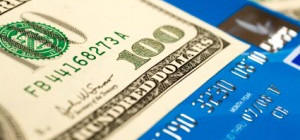Have you always used a debit card to date? It might be time to switch to a credit card given its many benefits. If you were always under the impression that credit cards are only good for making purchases, think again. Credit cards have several advantages over the debit cards, including helping you save money on your purchases.
Not sure how to buy and use a credit card? Read ahead and understand how.
Understanding Credit Cards
In appearance, the credit card looks similar to a debit card. However, the fundamental difference is that each time you use the debit card to make a purchase; the funds are drawn directly from your bank account. Credit cards, on the other hand, provide you with no-interest short-term loans as long as you pay off the balance within the due date. Typically, credit cards come with a 30-day billing cycle and the provider may also offer you a grace period within which you can clear your payments. In case you’re unable to make payments before the due date, you’ll accrue interest on the balance you carry each day all through the interest period. There are different types of credit cards that are best suited for different use cases. It’s best to use a credit card comparison to compare all the different types of cards and the provider’s best offer.
Advantages of Using a Credit Card
Credit cards are far more advantageous as compared to debit cards. Here are the typical positives you can avail of:
- This mode of payment for your shopping helps you build an impressive credit history. A good score can help you get insurance plans at cheaper premiums, and loans and mortgages at more economical rates of interest. Should you plan on buying a cell phone, apartment, car, or any other asset, getting approval for the loan is much easier. Utility companies are less likely to ask for a deposit when you apply for a connection.
- You can use the cash back benefit or points collected under the rewards program each time you make a purchase or travel and these benefits can be around 1% to 2% of the payment you make.
- Should you make purchases using the credit card, you’ll get additional benefits like free insurance against theft or damage to the purchase, price protection, insurance on rental cars, and extended warranties on any items you buy.
- Some card providers offer you 0% interest on the purchase of specific items and on any balances you may transfer on a new card. This interest-free period may last for 12 to 18 months.
Understanding the Grace Period
By buying a credit card, you’re essentially taking an interest-free loan for a short period, but with a grace period. For instance, you’re using a credit card with a billing cycle from March 5 to April 4 with the due date set at May 1st. You can make all the purchases you want on the credit card without paying any interest up to May 1st. On this date, if you haven’t cleared your bill, you’ll pay an interest on the average balance you carry each day.
Calculating the Payable Interest on the Credit Card Balances
At the time of buying the credit card, it is best that you understand how the interest system works. To begin with, understand that if you don’t clear the bill in full, you’ll pay interest on the average daily balance in your account all through the month.
Try this example. Say, at the end of the billing cycle, the card balance stands at $1000. You pay off $200 on day 11 of the interest period. Next, you pay another $350 on day 21. Although you’ve cleared $550, the daily average balance will be $750.
Most credit card companies levy an annual percentage rate (APR) of 20% where the periodic interest rate is 0.0548%. To arrive at this figure, you must divide the APR by the number of the days in the year, namely 365. If you were to multiply the average daily balance of $750 by the periodic interest rate and the number of days you carried an unpaid balance, you’ll arrive at an interest of $12.33.
This interest can be easily avoided by paying off each credit card statement as it arrives every month. Although the provider only needs you to clear a minimum balance, you need not pay interest if you can keep your expenses in check.
Calculating Interest on Cash Advances
Most credit card providers allow you to use your card to withdraw cash. However, you’re expected to pay off the balance within the billing period without any grace time. Not only will you pay a higher rate of interest, but you also incur a higher penalty interest rate of you can’t clear payments on time or go over your card limit. Be clear about these details at the time of buying the credit card.
Understanding How Minimum Payments Work
Although it is advisable that you clear your credit card bill in full by the due date, credit card issuers typically have a minimum payment limit or the smallest sum you can pay each month. As long as you make this payment, you won’t incur a late payment fee or a black mark on your credit history. Each card issuer calculates the minimum payment according to the card’s terms and conditions. Take a look at two of these examples.
Combination of Percentage, Interest, and Fee
Your credit card provider will take into account a percentage of the amount you owe and add it to the applicable interest and fee. This is the minimum amount you owe. Try this example where you owe $1,000 on your credit card. You’re required to pay:
1% of Balance: $10
18% Interest: $14.79
Late Payment Fee: $35
Total: $59.79
Percentage Method
The card issuer may have a fixed percentage of the balance you must pay each month and this can vary between 1% and 3%. Accordingly, if you owe a $3,000 balance, you’ll pay a minimum of $90 at 3% to maintain your credit card.
Flat Rate Method
Some cars issuers set a flat minimum payment amount each month and this typically applies to users who carry a low balance. You can expect flat rates to vary between $25 and $35 each month.
How to Earn Rewards on Credit Cards
Each time you charge a purchase or travel expense on your credit card, the vendor’s bank pays an interchange fee to the customer’s bank. These interchange fees may vary, but usually range from 2% or higher. That’s how you earn rewards, because of the competitive rewards credit card banks get. Keep in mind that these rewards can depend on the specific kind of purchases you make. Further, the card company may fix a limit on the total cash you can earn in rewards within a month, quarter, or year. For more details, it is best to check the benefits statement issued by the card provider.
Actual Costs of Using Credit Cards
If you’re not careful about how you use the credit card, you could end up incurring various fees. Take a look at the most common ones and how you can avoid paying them.
Balance Transfer Fee
The balance transfer facility is ideal for people who have a large credit card debt. They can transfer to the debt to a credit card that carries a 0% interest introductory period. In this way, they can clear the debt without having to pay interest on it. However, you may want to be prepared to pay a balance transfer fee for the transaction that could be around 3% to 4%. For this reason, compare the interest you’re currently paying with the applicable balance transfer fee and make your decision. Depending on your credit history, you could qualify for balance transfers without having to pay any transfer charges.
Late Payment Fee
As explained earlier, you’ll incur a late payment fee for not clearing your credit card bill by the due date. Avoid paying this charge by clearing the bill on time.
Annual Fee
Both secured and unsecured cards carry an annual fee. Typically, unsecured cards that include high-value rewards are more likely to carry an annual fee. Most providers offer you credit cards without the annual fee, but it makes sense to pay the fee if you think your purchasing is high enough to earn you adequate rewards.
Foreign Transaction Fee
If you intend to use your credit card for making purchases on vacation in overseas locations, opt for a credit card that does not carry foreign transaction fees. Typically, card issuers charge a fee between 3% and 4% of your purchase.
Over-the-Limit Fee
Accordingly to the Credit CARD Act of 2009, you must give your consent to pay the over-the-limit fee. If you don’t consent and your credit card does not have a balance, your purchases could get rejected at the cash counter for going over the limit.
How Credit Card Companies Ensure the Security of Your Card
Every credit card has a secure EMV chip embedded in it. Such cards are more secure than the conventional cards with magstripes and are the only accepted kind in any location, local or overseas. The EMV chips transmit data in small sections between the accepting bank’s host, terminal, and card making it impossible to duplicate them.
To use the EMV card, you must insert it into the EMV slot with the chip pointing into the slot. Allow the transaction to take place and wait until the receipt starts to print. In case you’re using the card within the USA, you’ll be asked to sign to verify that you’re the owner of the card and purchase being made on it. However, countries like in Europe use the Chip-and-PIN system where you’ll enter the card and a secure 4 or 6 digits PIN for verifying ownership.
Choosing Between Secured and Unsecured Cards
At the time of buying your credit card, the issuer will offer you the option of a secured or unsecured card.
Secured Cards
If you cannot show a robust credit history, you may want to opt for the secured credit card. To get these cards, you must deposit cash equivalent to the card’s limit that will act as collateral in case you’re not able to pay off the credit card bill. In this way, the collateral acts as security for the issuer. At the same time, any purchases you make will not come out of the deposit you’ve put down. You’ll receive a credit card bill at the end of the billing cycle and you must pay it off in full. In case you’re unable to make payments, you’ll incur interest just like on a conventional credit card. You can get your deposit back once you switch to an unsecured card or cancel your secured card.
Unsecured Cards
To get an unsecured card, you must show that you have a good credit history and income levels. Because the unsecured card comes without collateral, you’ll start off with a low-limit credit card so the issuer can get some amount of security. Alternatively, you can get a friend or family member with a robust credit history to act as a cosigner for the unsecured card.
Here’s another option to secured and unsecured cards in case you don’t have good credit standing. Ask friends or family members to add you into their credit accounts as authorized users. In this way, you’ll get the benefits of the credit card, but without the legal liability to pay off the balances.
How to Improve Your Credit Score with Prudent Credit Card Usage
When considering your application, credit card providers take your FICO score into consideration. This score is dependent on 5 major factors.
Payment History that Accounts for 35% of the Score
Improve your credit score by clearing the entire credit card bill each time it comes in. Being a few days late may not earn you a black mark, but consistent late payments can get reported to the credit bureaus and bring down your score.
Credit Utilization that Accounts for 30% of the Score
The percentage of the card limit that you use is card utilization. And, to improve your credit scores, you must aim to keep the used balance at 30% or less of the credit limit.
Length of Credit History Accounts for 15% of the Score
Given that building a favorable credit score takes time, card issuers take into consideration the number of accounts you’re holding and the period of time for which you have them. By keeping old accounts open and in regular use, you can raise your credit scores.
Types of Accounts in Use Make Up 10% of the Score
Card issuers are impressed when they see you holding multiple debts like a mortgage, or car or student loans and making regular payments towards them. But, since this factor makes up only 10% of the total FICO score, it is advisable that you don’t take on more loans just to get a credit card.
New Credit Accounts for 10% of the Score
Surprisingly, applying for a new credit card can bring down your credit scores. Accordingly, if you don’t have a robust credit history, you may want to avoid applying for multiple cards within a short time.
How Credit Utilization Affects FICO Scores
As mentioned in the earlier section, it is advisable to maintain the debt in your credit card at 30% or less at all times to earn a favorable FICO score. This score is calculated using one of two methods;
Line-item Utilization
Line-item utilization is the percentage of the credit card limit that you have spent making purchases. For instance, if your credit card limit is $6,000 and you have an existing balance of $2,000, the line-item utilization on the card is 30% and you might not want to charge any more purchases on the card.
Aggregate Utilization
If you own and are using multiple credit cards, the aggregate utilization is the average usage of all your cards. Say, for example,
Card 1 has a limit of $600 and a balance of $120
Card 2 has a limit of $3,000 and a balance of $600
Card 3 has a limit of $2,000 and a balance of $500
FICO will calculate your aggregate utilization as 20% + 20% + 25% divided by 3 = 21.67% which is favorable.
In conclusion, credit cards can be a very handy tool to use to build your credit score and avail of a lot of benefits. However, it is essential that you understand the relevant terms and conditions and use them wisely.












